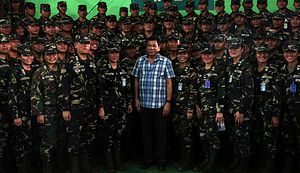Last week, a Philippine Navy (PN) official provided an update of where the Southeast Asia nation is with respect to its anti-submarine warfare helicopters. The update was notable both within the context of the major boost it would constitute for Manila’s capabilities in and of itself and also in the broader defense modernization effort it is undertaking.
As I have noted before in these pages, the Philippines, which remains one of the region’s weakest militaries, has been on an ongoing effort to boost its defense capabilities over the past few years. That effort continues to be pursued under Philippine President Rodrigo Duterte, albeit with a mix of continuity and change and amid a range of trends and developments (See: “The Future of Philippine Military Modernization Under Duterte: What’s on the Second Horizon?”).
One of the types of equipment within that defense modernization has been helicopters, with recent headlines focusing on Manila’s planned acquisition of new helicopters as well as efforts to maintain, repair, and overhaul systems of existing helicopters (See: “What a Dead Philippines-Canada Helicopter Deal Would Mean”).
One of the deals in this respect occurred back in 2016, when the Philippine Department of National Defense (DND) awarded Leonardo a 5.4 billion pesos ($101 million) contract for the two aircraft under the country’s Anti-Submarine Helicopter Acquisition Project. At the time, that was a headline-grabbing development as the Philippines had lacked an airborne anti-submarine warfare capability.
Last week, in an update of where the Philippines is on this capability, PN flag-officer-in-command Vice Admiral Robert Empedrad said that the PN would likely receive two Leonardo AW159 Lynx Wildcat naval helicopters with anti-submarine warfare capabilities in March 2019.
Empedrad also noted that the addition of the helicopters and the anti-submarine capability would help reinforce the defense of Philippine vessels. While he did not elaborate, the Philippines is expecting the delivery of several additional frigates in the coming years as part of planned additions within its defense modernization plans, including from South Korea.
Few other specifics were offered by Empedrad himself or by other Philippine defense officials subsequently. And as we have seen with other aspects of Philippine military modernization, the extent to which all of this will play out, including in terms of timelines and integration, remains to be seen. Nonetheless, over the course of the next few months, developments on this front will continue to be interesting to watch given its significance for Philippine defense needs.
































